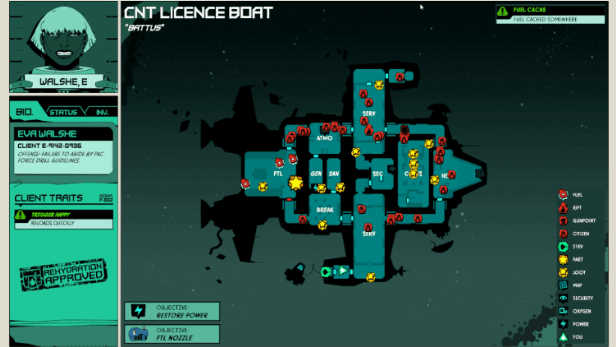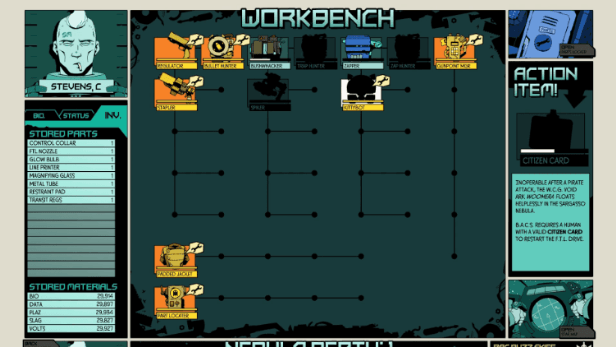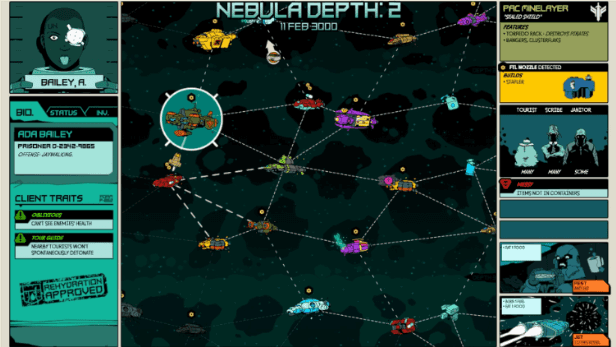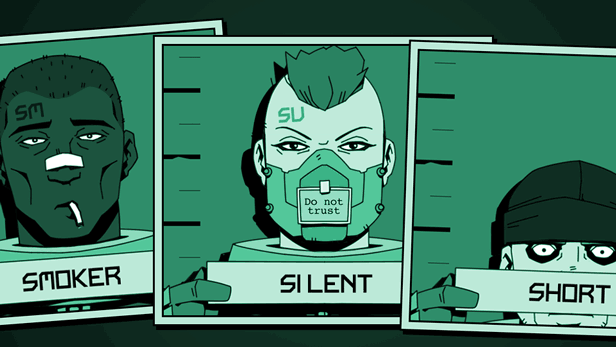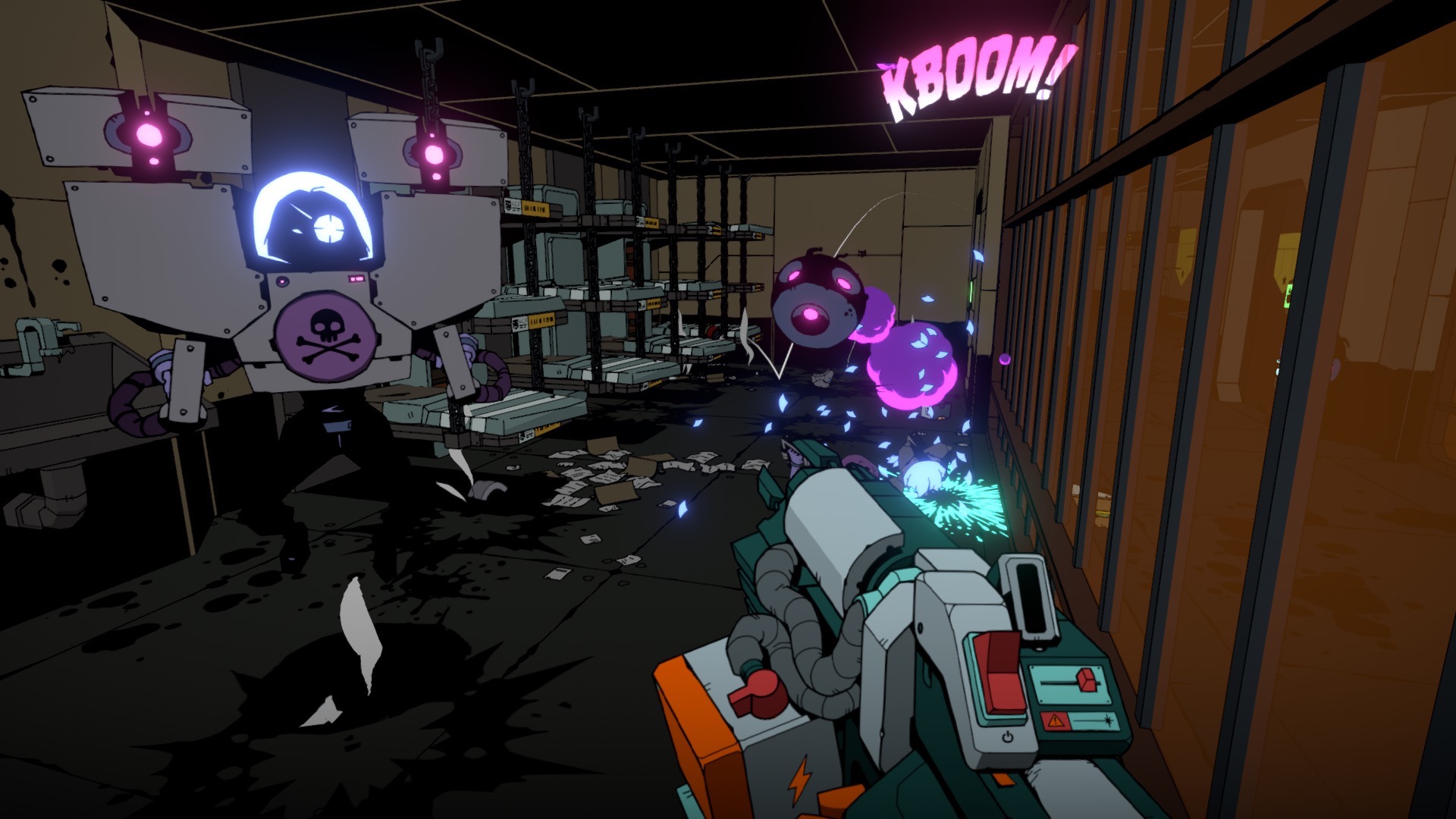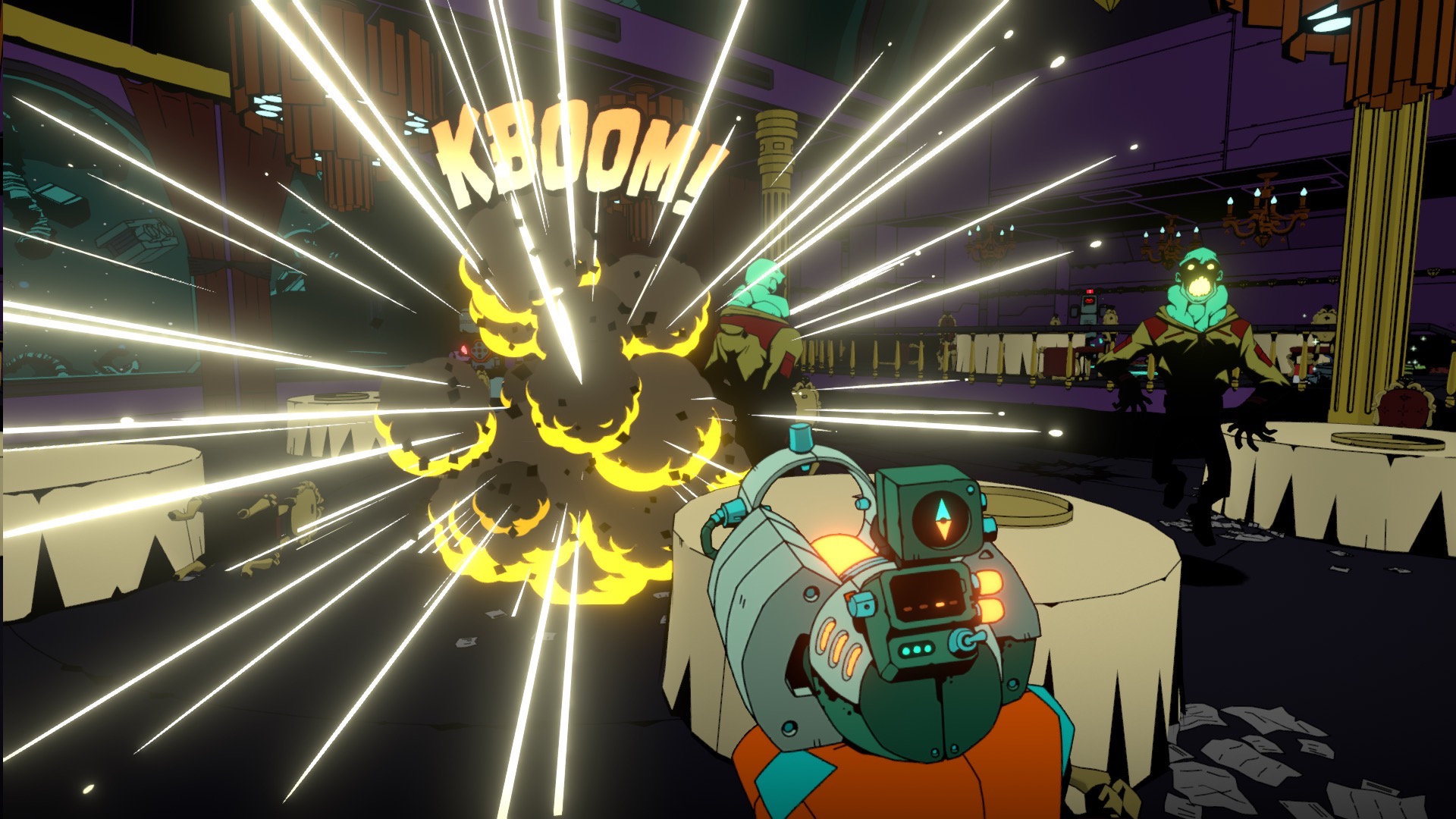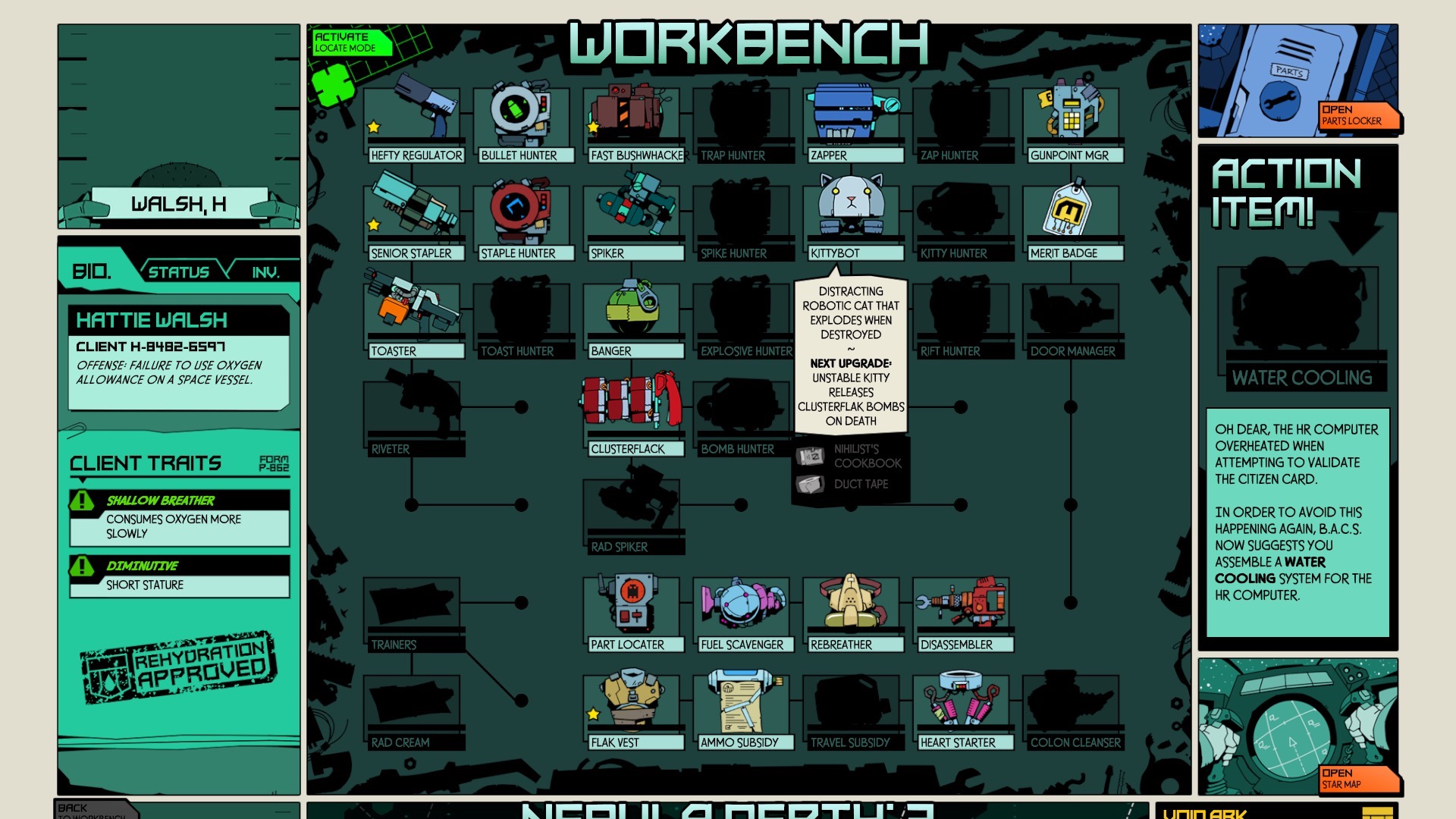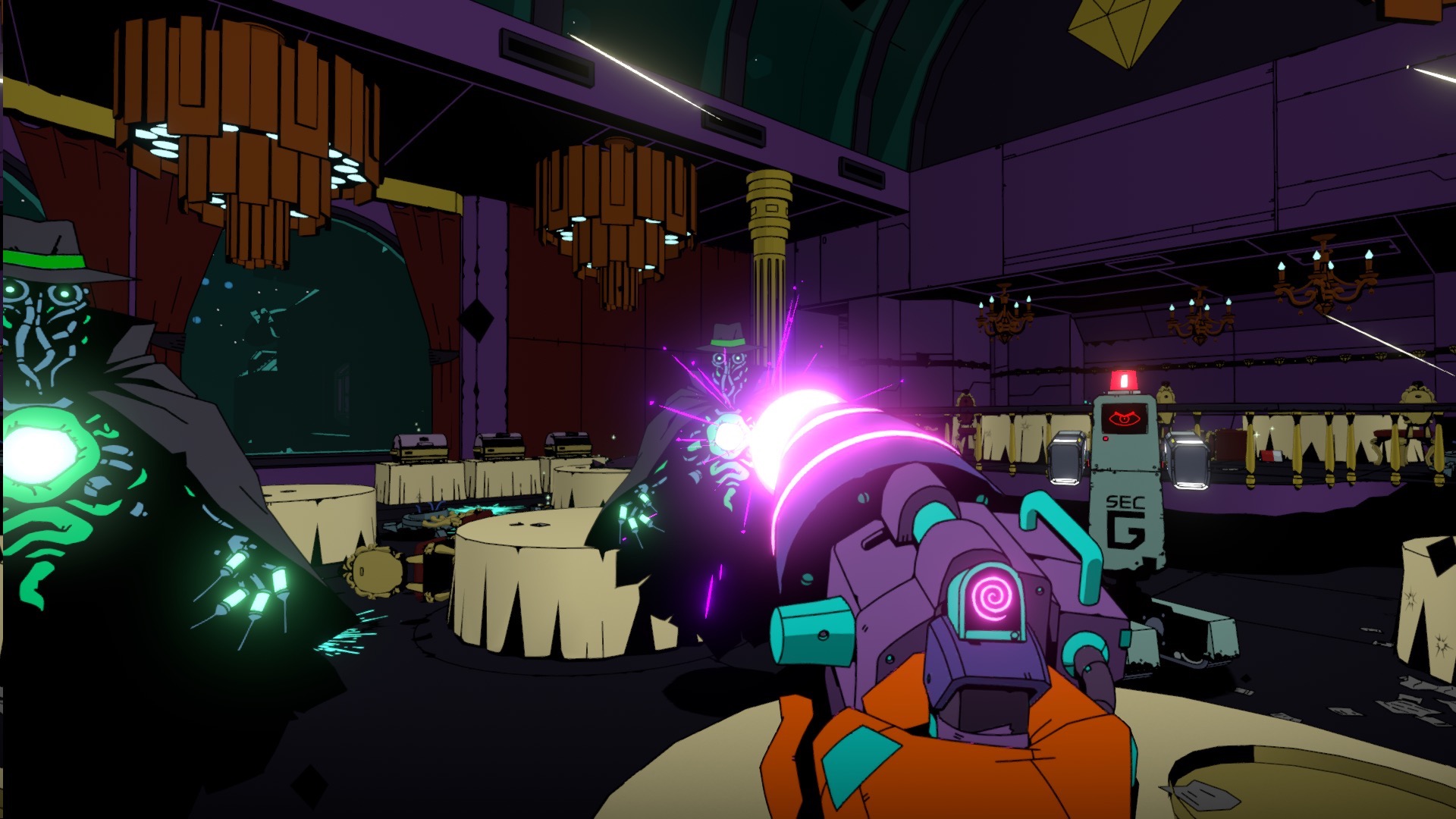Jon Chey interview: BioShock, System Shock 2, and Void Bastards
There’s a sense of unfinished business to
Void Bastards, the latest from Aussie indie studio Blue Manchu. See, the team is headed up by one of Irrational’s co-founders, Jon Chey, a man who headed up the project that eventually became
The Bureau: XCOM Declassified, a game that was not only a huge missed opportunity for the franchise, but one Chey didn’t see through to the end of its production, leaving 2K Marin as he did during the game’s development. It released years later to a seriously muted reception, and lived up to very little of the initial promise it had shown early on in its life.
So is
Void Bastards a righting of this particular wrong? A way in which Chey can bring us the game we were meant to have before the jam-coated hands of publisher interference smeared their sticky obfuscation all over
XCOM’s FPS attempt? Well… no, not really. But it’s still a jumping off point for the project, and
Void Bastards combines the hallmarks of the classic strategy-action of the alien defence simulator with a host of intensely creative, exciting elements, as well as touches from Chey’s historical dabbling in the likes of
BioShock and
System Shock 2. If you’re not excited by that mix, you may need to check you’re still breathing.
It is, on the face of it all, a first-person shooter, but dig a tiny bit deeper and
Void Bastardsreveals itself as much more. The stylised visuals bring to life a world in which the player has to navigate the titular illegitimate ones out of the Sargasso Nebula, choosing where to go, what missions to take on, what supplies to acquire, and what tactics to employ along the way. It’s a deep, systems-based title with all the promise in the world – and a sense of humour to boot, with Douglas Adams a source of inspiration for
Void Bastards’ general outlook on (space-)life.
There’ll be times when running – rather than shooting – is the better tactic. This may well be one of those times.
How will Void Bastards’ FPS elements differ from other shooters?
Void Bastards is really much more in the lineage of
System Shock 2 than other shooters that are much more gun-focused. Of course, we have a lot of different guns and you spend a good amount of time shooting enemies in the face, but you also have access to a lot of other ways of dealing with hostiles. And, importantly, the main focus of the game isn’t killing everyone. Killing enemies is one way of getting what you want – but you can also choose to avoid combat or avoid the situation entirely.
Say I’m heading to security module to shut down the security system and I see a screw (a prison guard – very tough) patrolling around in there. I can play a typical shooter-type game where I dodge back and forth trying to shoot him in the head while dodging his shots. Or I can employ a more indirect weapon – for example, I could throw down a kittybot to distract him while I run in and use the security terminal. Or I could wait until his back is turned and sneak in. Or I could just say “Nah, I won’t bother today.” There’s a lot more to think about than just pure optimisation of combat.
What’s the balance between action and strategy, would you say?
In terms of time, it’s probably 80–90% action and 10–20% strategy, but the action element also involves a lot of tactical planning. So the strategy is deeply entwined and doesn’t just live in its own mode.
You clearly love card games and board games. Is the strategy element of Void Bastards also influenced by tabletop games?
It’s probably more influenced by PC strategy games. It has a lot of classic PC strategy game elements: resource juggling, a limited but rich set of choices to make each turn, and a palette of information to support those choices that try to highlight and pull out the relevant factors.
Blue Manchu says the game’s campaign will last around 12 to 15 hours.
What of XCOM has been brought to Void Bastards?
For me,
XCOM was the defining game that created the notion of a strategy game where you are in charge of the execution of the strategy as well as the high level planning. Of course, now, there are other games like that, but not a lot of first-person shooters. So, our goal was really to translate this two-layer notion into the FPS genre.
The key part of this two-layer structure is that you navigate through the nebula and then choose which ship to go into – which you then play out in first-person, but we try to build a lot of other interactions between the two layers as well.
For example, you can find tools in-mission that you employ at the strategic layer (torpedoes, warp keys and so on) and vice versa. On some ships you can find a supply flare that sends out a distress beacon. When you come back to the strategy layer, a supply van will come to your location carrying the stuff you requested. Of course, you have to be careful not to bump into pirates or other hazards while trying to hook up with the supply van…
How deep does the Douglas Adams influence go? Can we expect more of the dry, surreal comedy we’ve already seen?
One of the big influences on the story was Adam’s game from the eighties:
Bureaucracy. It’s a text adventure which tells a story about someone who has to deal with a whole series of problems stemming from the fact that he changed his address. He goes to the bank to let them know and they tell him to fill out a form that they’ve sent to his old address. It all goes downhill from there.
We wanted to capture that sense of frustration and anger that comes from having to deal not with real problems, but ones created by an inflexible system. The whole way through
Void Bastards there’s a sense that everything could be resolved if BACS, the admin computer, would just get on with things but it’s determined that all the paperwork be completed satisfactorily, even if it’s at the cost of several hundred lives.
What engine does Void Bastards run on, and how have you achieved that wonderful cel-shaded effect?
It’s this incredible super-secret engine you’ve probably never heard of called Unity!
Seriously though, our approach is usually to try to do something smart with existing tools rather than write a lot of never- before-seen tech. In this case, I think a lot of our unique look comes from a rigidly enforced art style (e.g. we try to hand-draw shadows and shading in a way that isn’t ‘realistic’ but instead fits with an illustrated style). Another part is that we render lines explicitly rather than doing them via a textured polygon. That way we make sure that the line thickness is constant rather than varying with distance – exactly as it would be in a hand-drawn image.
Void Bastards’ illustrated look saves on expensive hi-res textures, and also looks magnificent.
Making a game reliant on systems and their interactions is something most of us mere mortals don’t understand. What’s the most fun aspect of stitching all of this together?
For me, the most fun is when stuff emerges that you haven’t thought of. For example, we made a rifter gun that pulls enemies out of the world and then dumps them back where you want. The obvious use for that is to grab tough enemies and then dump them back somewhere where you can deal with them (either in a locked room or maybe just into an airlock). What I didn’t think of is that it’s also a great tool for grabbing a subverted turret and moving it around like a mobile killing machine.
The ‘endless supply’ of prisoners – your ‘barrel of Bastards’, if you will – to use on scavenging missions; are these procedurally generated?
Yes, each prisoner is generated and has a unique set of traits that vary their characteristics and what play style you’ll need to use to get the best out of them. For example, one might be capable of silent running, making them easier to use in a stealthy way, another might be allowed to take an extra weapon in their loadout, making them more tactically flexible.
What, if anything, has changed in your attitude to the industry since releasing Card Hunter? Did it open your eyes to anything unexpected?
Card Hunter’s reception reinforced to me that there’s value in really focusing on your niche and not trying to be distracted by mass market appeal. Of course, coming from triple-A development, the mass market mindset was something I had to try to shake off. In triple-A, you’d never try to do a retro RPG-themed card game/board game hybrid. But, as an indie, you can do that and it’s probably best to really focus on nailing what you’re trying to do rather than diluting for people who aren’t going to be into it anyway. So, in
Void Bastards, we really focus on our core strengths: tactical gameplay, strategic goals, planning and thinking, and less on ultra-smooth gunplay. The gunplay is more like the stuff you’d find in nineties sprite shooters and really can’t be compared to modern triple-A stuff like
Destiny or
Call of Duty.
Does Void Bastards feel like a logical step forward, technically, from Card Hunter?
Not really, no! It’s more of a weird sideways step.
Card Hunter was an interesting project for us since my background is almost entirely in single-player first-person shooters (
System Shock 2, BioShock etc.). OK, we did do some multiplayer (
Tribes: Vengeance) but I wouldn’t say that’s where our real expertise was. And we did do a real-time strategy game (
Freedom Force) that I was very fond of, but I had never made a card game or a turn-based strategy game. So Card Hunter was lots of new tech: database back end, web front end, Flash etc. And now we’re kind of throwing that all away and starting again with a pure single-player shooter experience. Not logical, but it keeps things interesting.
Void Bastards’ strategy layer is “deeply entwined” with its FPS action, Chey says.
Void Bastards is coming to Xbox One – what brought you back to console?
Money. No, not really – we always thought of this as a console and PC game, not least because BioShock was our first big console/PC title and it’s clear that lots of people who probably want to play these kinds of games want to do so on console. So we’d be kind of silly to not cater for them.
System Shock 2 cost around $700,000 to make. What’s the secret to making the most of a budget like that?
Part of the secret to making
System Shock 2 was some pretty insane crunch. We don’t do that anymore so we have to find other ways to make a limited budget work. There are probably two keys for us: one is that we have a revenue sharing system so everyone draws less salary but looks forward to making money from game sales. The other is that the team are in a position where they can handle a relatively long project cycle: people set their own hours and generally aren’t full-time, so the whole thing proceeds at a relatively leisurely pace. This allows us to be very efficient with the actual hours that we do bill to the project.
What’s the set-up at Blue Manchu like these days? In the beginning you were working remotely – is that still the case?
Right now, we have a small studio in Canberra where most of us work but we also have Ben Lee and Cara Ellison in the UK and Ryan Roth in Canada (though he’s in Japan at the time of writing). So we’re still somewhat virtual with the advantage of having at least some of the team in one place.
Is there anything you miss about working on big budget games, or is this really the gaming equivalent of moving to the countryside and having a much happier life?
Things I miss: the company paying for me to fly business class to the US from Australia.
Things I don’t miss: reporting to a boss, working with Microsoft Project, endless meetings, marketing-driven decision making. I could go on, but I probably shouldn’t.
Void Bastards releases on PC and Xbox One later this year.
The thrill of the hunt
Card Hunters: deep, strategic, fun.
After leaving 2K and setting up Blue Manchu in 2011, Chey’s first project was… well, exactly the reason he felt the need to leave 2K: a free-to-play, browser-based card battler which would effortlessly lampoon the world of Dungeons & Dragons while providing a deep, strategic, and rewarding well of fun. 2013’s
Card Hunter didn’t set the world aflame, but it proved two things: one, Chey was still capable of running a studio that could produce great games, and two, it was possible to make games he wanted to make without the big, bad corporate overlords breathing down his neck.
![The Year of Incline [2014] Codex 2014](/forums/smiles/campaign_tags/campaign_incline2014.png)

